The example I purchased is one of the newest currently produced by Strider – a “7th generation” model which has an improved lock face geometry designed to reduce dreaded “lock rock” as well as increase longevity as the lock face wears against the blade tang. While I’ve not sampled previous generations of Strider products, the community of Strider enthusiasts or self-titled “Striderholics” seem over the moon with the design and manufacturing improvements present in the Gen 7 models. From my perspective the quality of construction and build exhibited in this Strider SnG is in most respects in the same league as my Chris Reeve Umnumzaan and my Hinderer XM-18. Out of the box, the knife did remind me of my ZT 0550 in that the opening action was quite tight initially and did require a period of break-in to loosen to a more acceptable level. I’ve been carrying my SnG for several days, and have been purposely opening/closing the knife several times a day. At this point, the knife has loosened considerably, but I still can’t flick open the knife with the thumb hole without also employment some wrist snap. I’m told with time the action will continue to loosen.
The factory edge on the knife blade was acceptably sharp, but not impressively so – something I immediately rectified with my Wicked Edge knife sharpener. Much has been written about attributes and performance of the S30v blade steel used to make the blade on this SnG – and Strider uses a heat treatment process which brings optimal performance from any blade steel on which its used.
No imperfections were present on the G10 or titanium side of the handle, and blade lock up was extremely solid exhibiting no side to side play or “lock rock” and the blade is perfectly centered within the handle. Apparently Strider has historically had minor problems in the area of quality control, but again these “Gen 7” knives seem to be the best, most consistently well made knives Strider has ever produced.
From an aesthetic standpoint, the Strider SnG is certainly a distinctive, and somewhat polarizing design. Admittedly, it took me some time to warm up to the SnG. There are several variations of the SnG (double gunner grip, aluminum handles, “lego,” etc.) but it was the concealed carry version which most appealed to me:
The G10 handles on the SnG have visible striations or grain pattern, but despite the textured look, they’re completely smooth (with a tactile quality not unlike smooth ceramic). Set into the handle are black screws and the large blade pivot screw also done in black, which I think looks great against the brown G10. Strider’s approach to the G10 side of the knife is unique – no liner is used to enhance the structural integrity of the knife. Instead, the G10 is milled out in a manner which maximizes structural rigidity, and connects directly do the titanium backside of the knife. The knife is impressively light-weight for its dimensions – just 4.2 oz. for the concealed carry (or “CC”) version which is designed to be both lighter and thinner than other SnG variations.
Turning to the backside of the knife, we see the “flamed” finish applied to the titanium:
If you’re like me, when you see a photograph of the Strider flamed titanium back, you think it has a texture – almost like ridges. However, much like the G10 on the front, the Ti side is completely smooth. Visually, it’s very interesting to look at – upon close inspection you can see multiple colors and patterns in the flamed finish:
In these photos you can also see the relatively new “ghost stripe” finish applied to the 3.5″ S30v blade of the SnG. The finish is achieved by taking a stonewashed (tumbled) finished blade, applying strips of tape to sections of the blade, then bead blasting the exposed areas. I’ve never been a big fan of the traditional Strider “tiger stripes” but am really liking the looks of this ghost stripe finish. I suspect the bead blasted areas will be more susceptible to oxidation (rust) and may also show wear more readily than the stone washed areas. But that’s a risk I’m willing to accept for the aesthetic provided by the Strider ghost finish.
As I previously mentioned, I’ve been carrying this SnG CC model for several days – I’m pleased to report that it carries extremely well. Through the week I carry a knife dropped into the right front pocket of my dress pants (I don’t use the pocket clip). The knife disappears into my pocket and I don’t know it’s there – the thin profile and light weight of the the “concealed carry” version of the SnG are fantastic. This particular form factor is produced in three difference sizes by Strider – one larger than the SnG (the SMF) and one smaller (the PT). For my purposes, the mid-sized SnG is the equivalent of baby bear soup. As you can see by the below photo, the SnG is roughly the same overall size closed as both my Umnumzaan and my XM-18, but carries less obtrusively than either:
In hand, the Strider SnG feels just as good as it does in my pocket – better in fact. 🙂 Ergonomically, the knife looks rather odd. Looking at it, I can’t think of any reason why the knife would feel good to hold on to – it just does. One would also assume that with the smooth G10 on one side and the smooth titanium on the other that this knife would pretty slick and hard to hold on to – it isn’t. In particularly, the jimping present where the G10 meets the blade spine is quite effective in helping the user maintain good hand position on the knife. I’m perfectly satisfied that I could hang on to this knife if pressed into a defensive role.
The Strider SnG is not perfect by any means, but I’m finding I’m liking the knife an order of magnitude more than I expected to. It has a certain intangible quality that I’m not certain I can adequately convey with words – it definitely has a “draw” to it. I plan to acquire at least one other SnG – a black CC model with either a stone washed or ghost striped finish. Pricing on the SnG CC model is on the high end of the SgG variants at $475.00, and the price seems consistent across the various Strider authorized dealers I’ve surveyed – discounts appear to be non-existent. The price is high, but Strider has one of the best warranties among knife manufacturers which seems to extend beyond simply dealing with manufacturing issues. While they apparently will charge a fee for repairing a knife which has problems due to being modified or taken apart and reassembled incorrectly, they seem to otherwise repair or replace knives sent to them free of charge. I’ve not had cause to use the Strider warranty, but am encouraged by the positive feedback from the enthusiast community concerning the warranty. For more information about Strider and their knives, do visit The Strider FAQ.

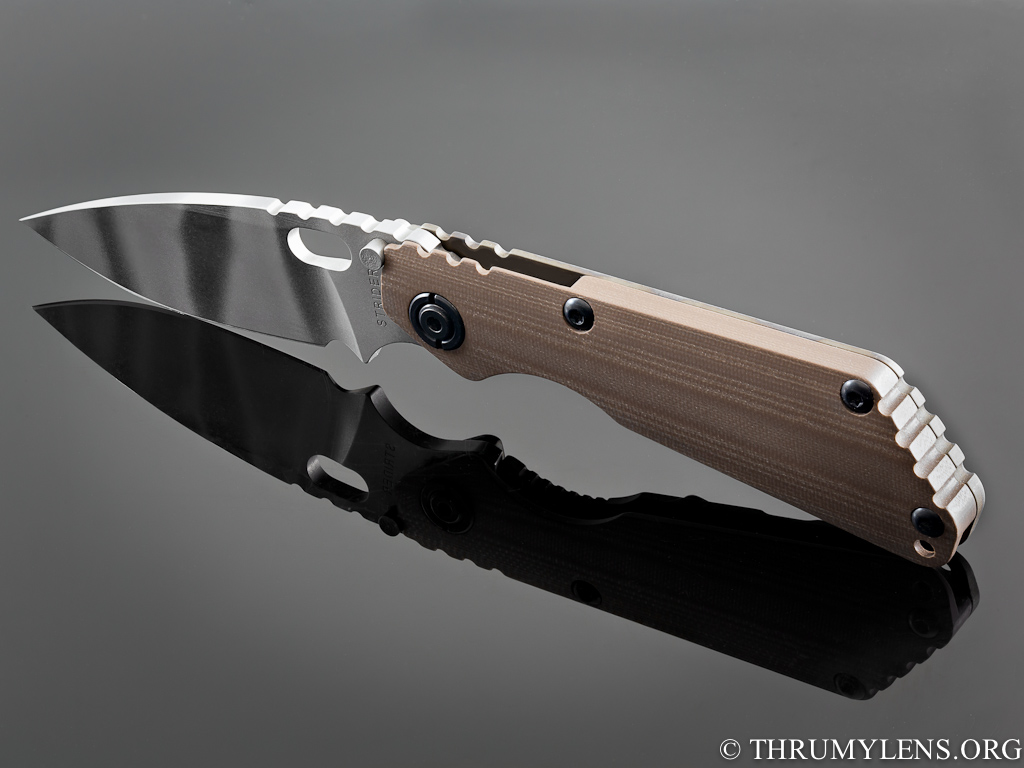
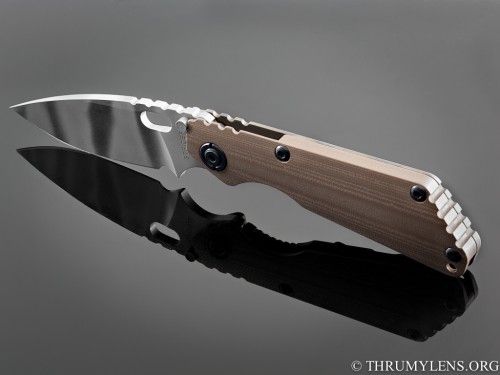
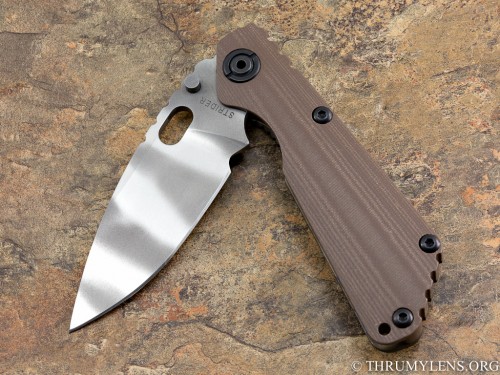
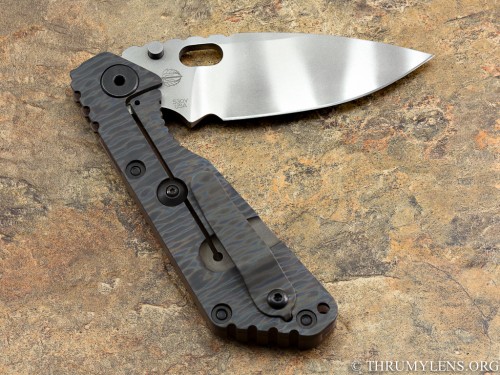
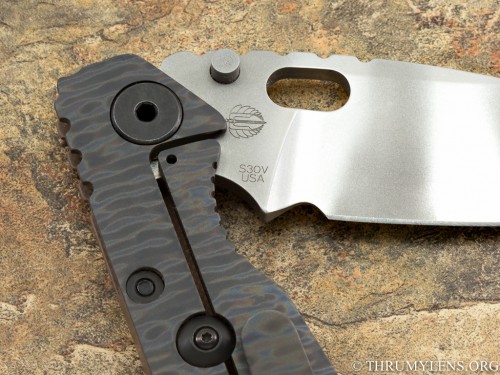
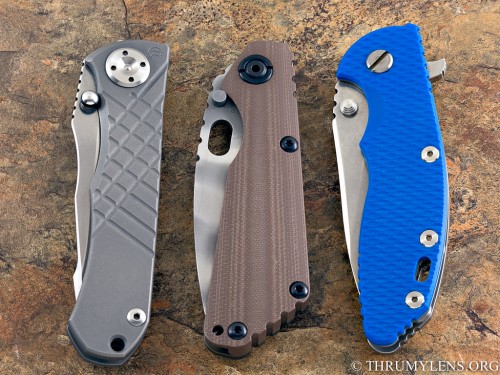
Call me silly, but I prefer the feel of Gerber’s Applegate-Fairbairn Covert or Combat models. Their automatic, FAST, or manual (combat folder) versions are all great options — I own them in every size and configuration from mini to large.
OK…you’re silly. 🙂